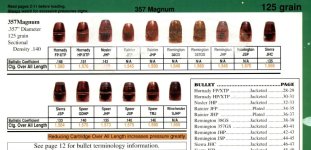Hi to all. Wondering if I could get some clarification. I'm some what confused. Using Hodgdon H110 for the 357 mag with 125 grain JHP, I have 4 different load date manuals that call for a wide range of powder weight. Lyman at 21-22, Nosler 14.9-15.9, Speer 18-20 and Hodgdon's web sight states 21-22 grains.
Do you see my confusion?
And just for comparison, Hodgdon says the 44 mag calls for 23-24 grains of H110.
I am currently using Titegroup, and seems to work well. Just thought it odd there's that much differences between manuals.
I would like to see your feedback.
Thank you Neil.
Do you see my confusion?
And just for comparison, Hodgdon says the 44 mag calls for 23-24 grains of H110.
I am currently using Titegroup, and seems to work well. Just thought it odd there's that much differences between manuals.
I would like to see your feedback.
Thank you Neil.


